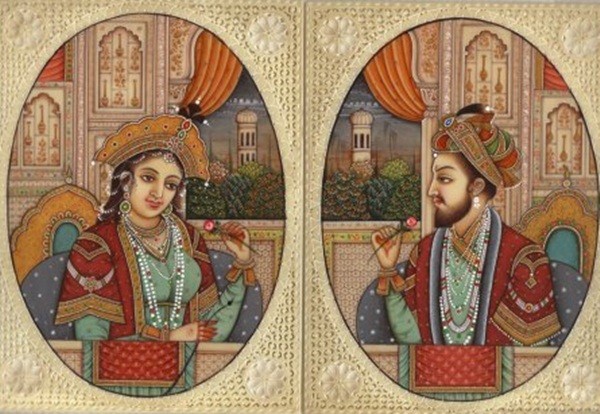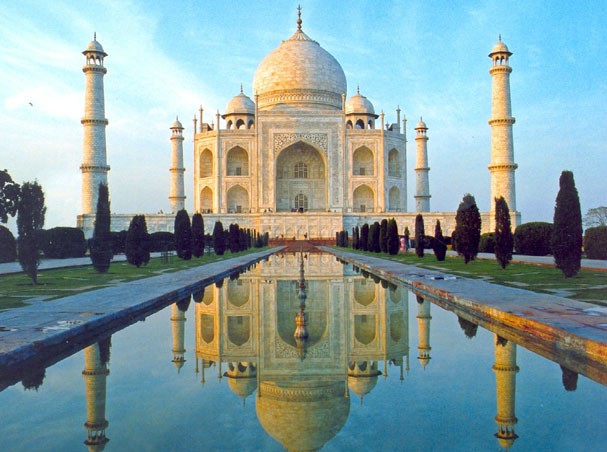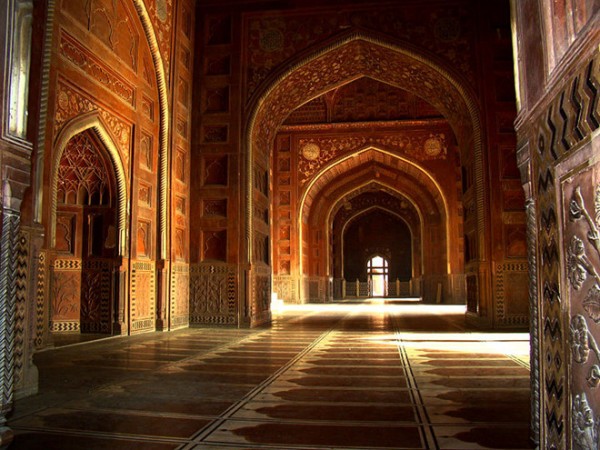Taj Mahal - Symbol of eternal love
 Photo of King Shah Jahan and Queen Mumtaz Mahal in the temple.
Photo of King Shah Jahan and Queen Mumtaz Mahal in the temple.
India - a country famous for its brilliant civilization containing mysteries in its strange culture, ancient wisdom traditions, rich history, land of myths and epics that we do not understand. meet anywhere else. Among them, we cannot ignore the Taj Mahan temple, considered a symbol of the eternal love between Emperor Shah Jahan and his queen.
Symbol of eternal love
Ranked as one of the 7 wonders of the world in 1983, the Taj Mahal - the pride of India not only attracts tourists with its splendid architecture and incredibly enchanting space, but also is the place that proves the eternal love of Emperor Shah Jahan and Queen Mumtaz Mahal.
Legend has it that this is a mausoleum built by Emperor Shah Jahan to commemorate his late wife - Queen Mumtaz Mahal. In 1612, King Shah Jahan married his third wife, Queen Mutaz Mahal.
She was the king's most beloved person during their 19 years of marriage. They loved each other very much and had 14 children together. After giving birth to the 14th child, Queen Mumtaz Mahal passed away. Before closing her eyes, she told King Shah Jahan: "Your Majesty, please promise me that you will build a mausoleum worthy of our love." The sacred temple reflects on the lake, creating a beautiful and mysterious scene.
The sacred temple reflects on the lake, creating a beautiful and mysterious scene.
The Taj Mahal is a priceless gift that Emperor Shah Jahan gave to his late wife, Queen Mumtaz Mahal. It is known that during their 18 years of marriage, the queen was always by the king's side even in the most arduous battles. And just overnight after his wife died, the king's hair and beard became white.
He did not take any more concubines, and spent the remaining 22 years building a sacred temple to commemorate the person who was with him. 20,000 workers, craftsmen around the world and more than 1,000 elephants carrying materials participated in the construction and carving of every delicate feature of the temple. At first, the mausoleum was called Tat Bibica Rauza, meaning "burial place of the Queen of Hearts", later it was named Taj Mahal, Persian for "Crown of the Mogol".
The Taj Mahal architectural work is considered a great model of the Mughal era with a synthetic style from Persian, Hindu, and Islamic architecture and is considered a symbol of the Muslim world. This place is also considered one of the most beautiful mausoleums in India as well as around the world. The entire building is built of white marble, exquisitely carved in every detail, demonstrating the masterful level of architectural sculpture at that time.
There is a legend that the king cut off the hands of all the designers and construction supervisors so that they could never design a second wonder like this again. The sweat and blood of countless people who built this "crown palace" had to endure so that the aura of the temple symbolizing divine love sparkles forever.
King Shah Jahan, because he loved his wife so much, created a wonder for humanity. It was also because of that love that he slipped into ignorance. At the end of his life, because he missed his wife so much, the king neglected all official affairs. When his son ascended the throne, he was imprisoned in a room in Agra Fort. There, every day Shah Jahan turned his eyes towards the Taj Mahal, where his beloved wife slept forever. Europe is also the happiness of the lover.
Special things only available at the Taj Mahal
Located on the Yamuna River, it was completed within 22 years, with the participation of about 10,000 stone masons and European stone mosaic experts. That is the reason why a sophisticated Taj Mahal was created from the soft curves of the elegant arches, the elegant straight lines of the rounded and virtual towers to each perfect and delicate motif and carving. The construction is symmetrical on both sides. In the middle of the mausoleum is a large high dome, the 4 corners are 4 pointed towers. The pale pink tombs of Emperor Shah Jahan and Queen Mumtaz Mahal are located in the large room on the second floor and are decorated with precious stones and many unique patterns. All over the elaborate walls and gates, we can easily see passages praising his late wife and the king's favorite Koran passages were also preserved.
The pale pink tombs of Emperor Shah Jahan and Queen Mumtaz Mahal are located in the large room on the second floor and are decorated with precious stones and many unique patterns. All over the elaborate walls and gates, we can easily see passages praising his late wife and the king's favorite Koran passages were also preserved.
This great tomb was built with 35 types of precious stones along with special materials that were gathered here, contributing to the construction of the temple, including: jade and crystal in China, marble in Rajasthan, jasper from Punjab and many other gemstones from Tibet, Sri Lanka, Afghanistan and Arabia. All the statues of the mausoleum are paved with marble, symbolizing the purity of the queen.
The sophistication of the architecture of the Taj Mahal is shown in small details with stone columns carved with 50 precious stones every 3cm square, the floor is paved with marble divided into black and white checkerboards, 4 The tower is about 40m high in the corner and the dome in the center. The vast garden (320m x 300m) with a lake in the middle is also paved with marble like a mirror reflecting the hidden and appearing image of the Taj Mahal. .
It is a harmonious combination of Persian, Central Asian and Islamic architecture, including 5 areas: Darwaza (main gate), Bageecha (garden space), Masjil (mosque), Naqqa Khana (mosque). motel) and Rauza (Taj Mahal mausoleum). Therefore, the temple's color changes magically during the day thanks to the discoloration of precious stones at different times depending on the color of the sunlight. At dawn, the temple reflects the bright sunrise as if it were plated with gold. At noon, the Taj Mahal shines in sparkling white jade. On a moonlit night, the marble slabs emit a magical silver light that fascinates people like crystal in the air.
Everyone seemed to be on an adventure with a cycle of emotions, from being surprised by the luxury and charm, to being amazed by the silence and pride, to being overwhelmed by the magnificence and solemnity of the temple. It is likened to the erratic personality of a woman, wanting to be loved, angry, resentful, and pampered. There is no lighting system installed inside the temple, but the sophistication of the soft curves of the elegant arches, the elegant straightness of the rounded towers and the unpredictable transformations of the temples cannot be overshadowed. Perfect and delicate carved motifs.
And the unique special feature of the Taj Mahal that cannot be compared anywhere else is the appearance and silhouette of Queen Mumtaz Mahal in each architectural line. The garden's design is as long as the Queen's figure, the dome is like her veil, and the shape of the temple is like a glittering teardrop - a symbol of eternal love. Intense love makes people do anything to express love. The Taj Mahal is a testament to one of the eternal love stories. Anyone who has ever had the opportunity to visit the Taj Mahal, when stepping out the door, will forever linger in their hearts and wish to return here one day with the person they love.
Therefore, going to the Taj Mahal to visit and admire one of the eternal symbols of love that lasts through the years, to get lost in the eternal world of love that the love-stricken king of the past created for him. A beautiful queen and for all humanity is the desire of anyone.





























